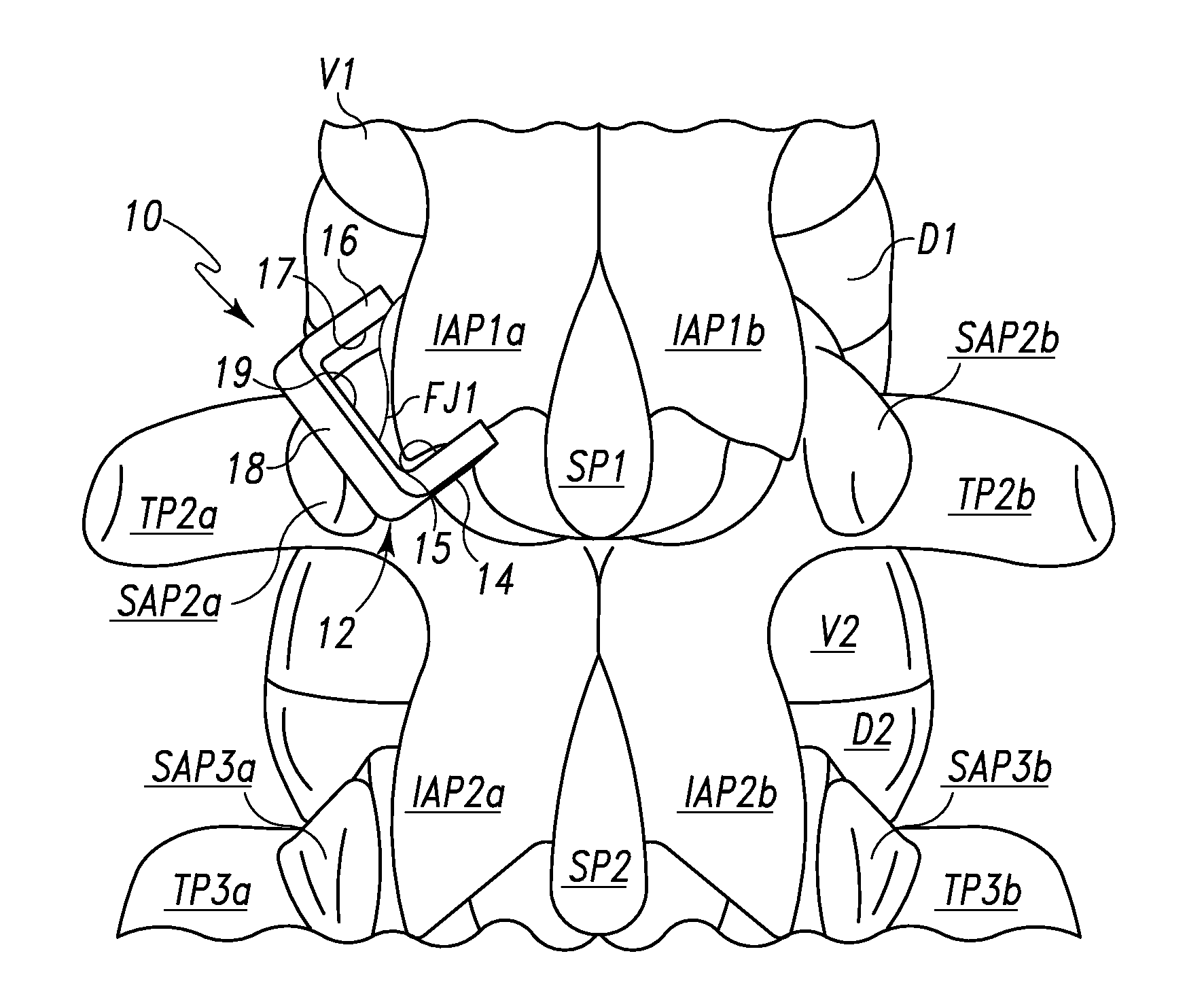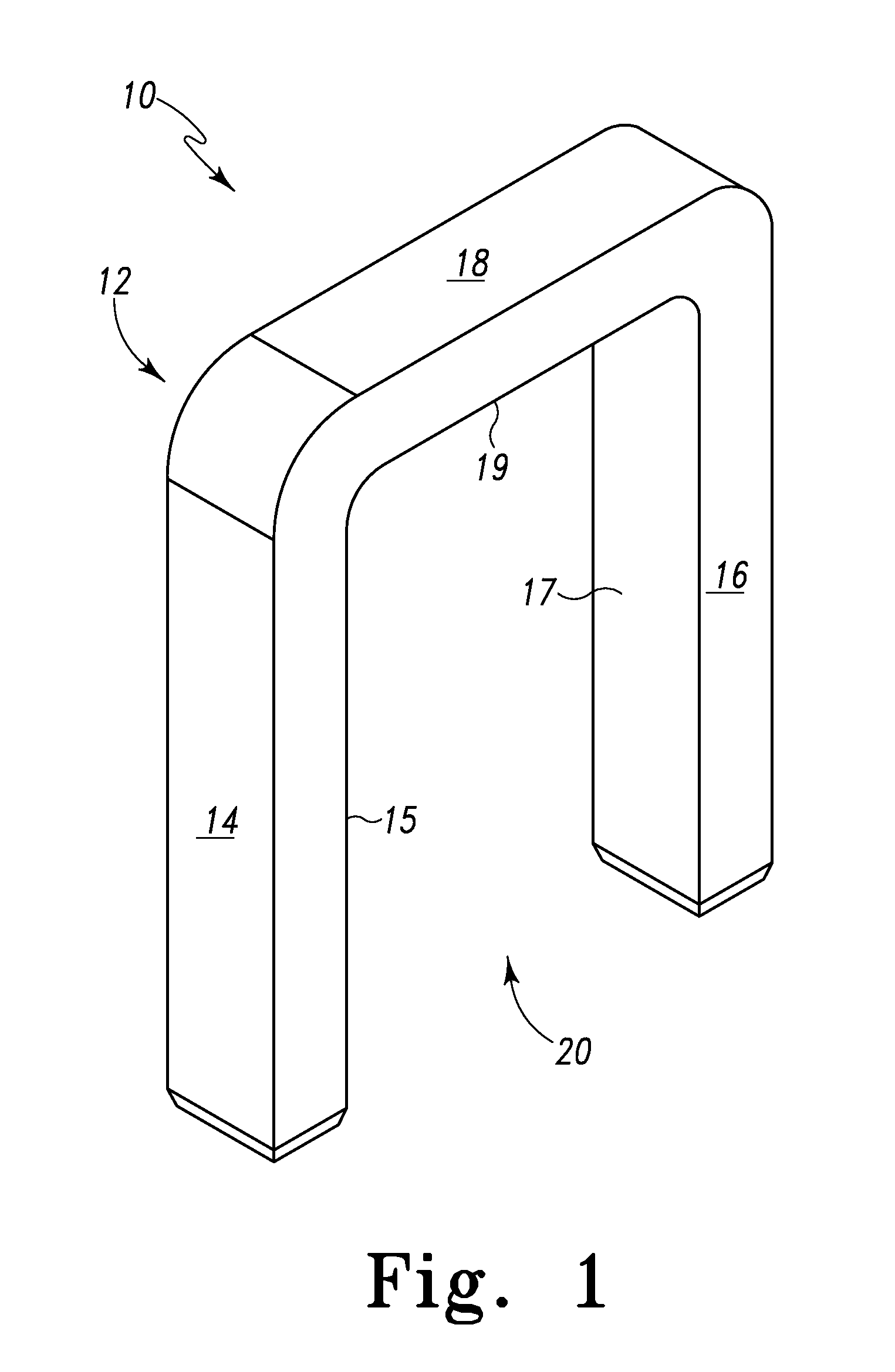Spinal Facet Fastener
a technology of spine and fastener, which is applied in the field of spine devices, can solve the problems of enlargement of joints, cartilage thinning or disappearing, wear or degeneration of many people, etc., and achieve the effect of preventing back-out and/or facet movemen
- Summary
- Abstract
- Description
- Claims
- Application Information
AI Technical Summary
Benefits of technology
Problems solved by technology
Method used
Image
Examples
Embodiment Construction
[0037]Referring to the figures, there is depicted various spinal facet fasteners fashioned in accordance with the present principles. The spinal facet fastener may be considered a clamp, tack, staple, retainer or holder depending on its form (hereinafter, collectively, spinal facet fastener). All of the spinal facet fasteners are fashioned from a biocompatible material such as plastic (e.g. polyetheretherketone (PEEK)), metal (e.g. titanium, stainless steel or alloy), a polymer, a composite, or the like.
[0038]Referring particularly to FIG. 1, there is depicted a spinal facet fastener fashioned as a spinal facet clamp, generally designated 10. The spinal facet clamp 10 is characterized by a preferably, but not necessarily, unitary body 12. The body 12 has a first leg, member, post or the like 14 (collectively, leg 14), a second leg, member, post or the like 16 (collectively, leg 16) and a cross member 18 that all form a generally U-shaped body. It should be appreciated that the terms...
PUM
 Login to View More
Login to View More Abstract
Description
Claims
Application Information
 Login to View More
Login to View More - R&D
- Intellectual Property
- Life Sciences
- Materials
- Tech Scout
- Unparalleled Data Quality
- Higher Quality Content
- 60% Fewer Hallucinations
Browse by: Latest US Patents, China's latest patents, Technical Efficacy Thesaurus, Application Domain, Technology Topic, Popular Technical Reports.
© 2025 PatSnap. All rights reserved.Legal|Privacy policy|Modern Slavery Act Transparency Statement|Sitemap|About US| Contact US: help@patsnap.com



